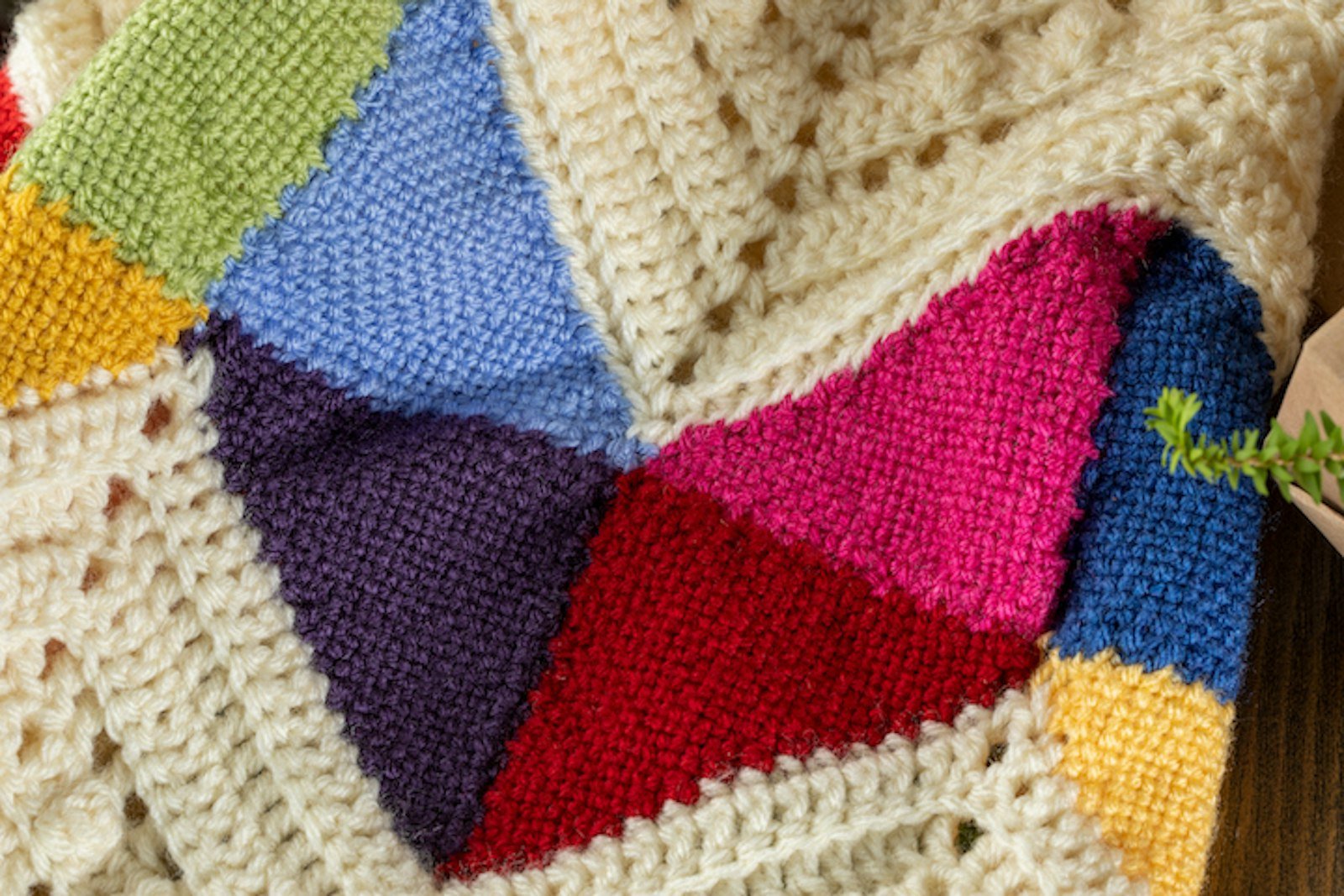Recently, while proofing pages for our upcoming Little Looms Holiday 2021, our managing editor became confused. She saw a discrepancy between the two projects we had that used triangle-shaped looms. In the first project, the given loom size corresponded with the shortest side of the loom; in the second, the size corresponded with the hypotenuse (longest side). Was this a mistake or maybe a difference in loom companies? I was curious, so I asked our amazing weaving editor, Angela K. Schneider, why she listed the sizing differently.
The first project in question used a triangle pin loom. These pin looms are similar to their more well-known, square-shaped kin in that the two short sides of the triangle have pins in groups of 3. Triangles are then woven as 2 layers of yarn are wrapped around various pins to create the warp and one layer of weft before the final layer of weft is woven in using a long weaving needle. With pin looms, the weft is parallel to the shortest side of the triangle, so that’s the measurement that determines the size of the loom. If you pick up a 4" right-triangle pin loom, then it will have two sides that measure 4" each, and the hypotenuse will be around 5 2/3".

For her Useful Bento Bag from Little Looms Summer 2021, Hazel Spencer wove the triangles on triangle looms using the continuous-strand method. Notice how the weft is parallel to the hypotenuse.
The second project used a triangle loom also known as a triangular loom or tri loom. These looms have pins or nails placed equal distance apart on all sides of the loom. They also tend to be larger (although not always), have more take-up once the cloth is taken off the loom, and are woven using the continuous-strand weaving method. With these looms, your weft is parallel to the hypotenuse, so the length of the hypotenuse is used as the size of the loom.
Usually, at least.
I say usually because there is no great Triangle Loom Council that meets in an extinct volcano once a year to determine triangle-loom orthodoxy. Sometimes triangle-loom manufacturers will measure looms by the shortest side while others will do so by the hypotenuse. Either way, though, manufacturers almost always specify what measurement of the triangle they are referring to in the description of their looms. While in Easy Weaving with Little Looms, we’ll always give pin-loom sizes based on the shortest side and triangle-loom measurements based on the hypotenuse, always double check both the loom type and loom size before buying.
Happy Weaving!
Christina

